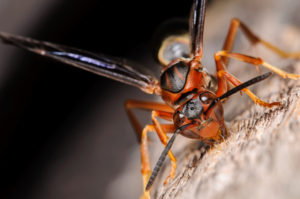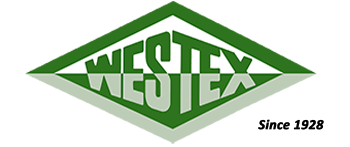 Paper wasps get their common name from the paper like material of which they construct their nests; true also of the other vespids. It has been suggested that they be called umbrella wasps based on the shape of their nests. In the urban situation, these usually unaggressive wasps are a nuisance pest
Paper wasps get their common name from the paper like material of which they construct their nests; true also of the other vespids. It has been suggested that they be called umbrella wasps based on the shape of their nests. In the urban situation, these usually unaggressive wasps are a nuisance pest
Adults are about 5/8-3/4″ (16-20 mm) long. Their color is brownish with yellow markings, a few species with reddish markings.
Paper wasps are semi-social, existing in small colonies but without a worker caste. Overwintering inseminated queens begin building nests in the spring. These founding I queens are often joined by other inseminated queens which assist in nest building and maintenance. Such secondary queens become functional workers and relegate egg laying to the founding queen. However, should the founding/dominant queen die, one of the secondaries can assume egg laying and assure that the nest will survive.
Nests consist of a single layer of paper like comb with the cells opening downward. This comb is supported/suspended from a branch, twig, or horizontal surface by a single long pedicel; this single, long pedicel apparently aids in the defense of the nest by predators such as ants
Paper wasps hang their comb nests from twigs and branches of trees and shrubs which can cause concern when ornamental shrubs and hedges are trimmed or fruit is being picked from trees. It a nest is contacted, there is high probability that person doing the trimming or fruit picking will get stung. Paper wasps also like to hang their comb nests from porch ceilings, the top member of window and door frames, soffits, eaves, attic rafters, deck floor joists and railings, etc., almost any protected place imaginable.
Paper wasps are beneficial insects, helping to control many insect pests. If their nest is located near human activity, control is warranted. It is essential that the adults be contacted and killed or they will quickly rebuild. For adults, use an appropriately labeled pesticide such as aerosol pyrethrins or a pyrethroid and do the application early in the morning or at night when most of the wasps will be on the nest. Then remove the nest. Before trimming shrubs or hedges or picking fruit, check the plant for paper wasp nests and treat and remove any found before proceeding. Be careful that the pesticide used will not harm the plant involved.
